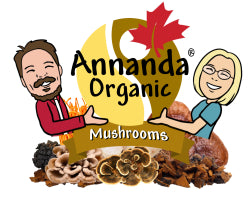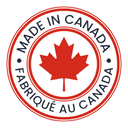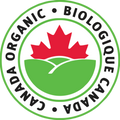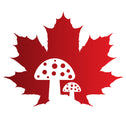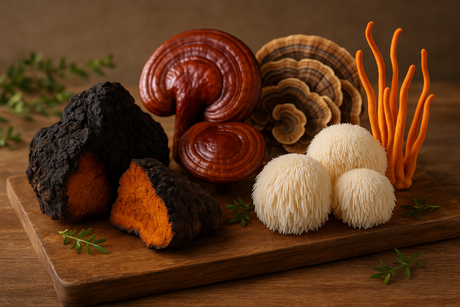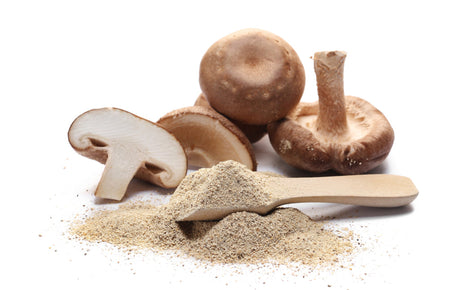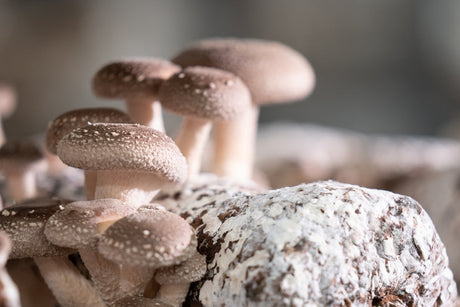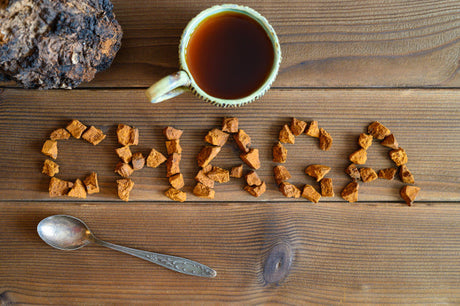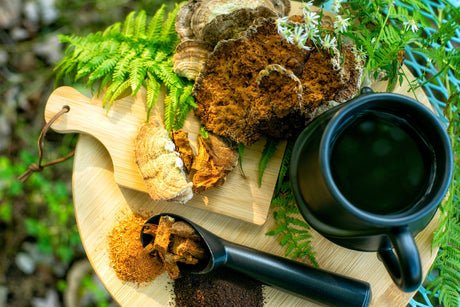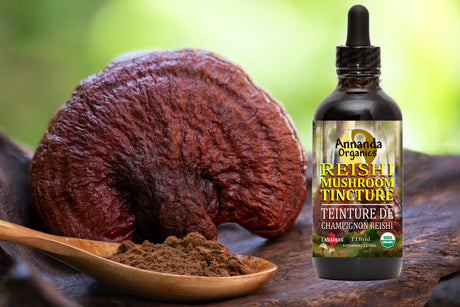Mycorrhizal fungi are known to have a wide range of potent benefits, from combating cancer to boosting your immune response and overall health.
A different kingdom from plants and animals mushroom mycelium are essentially the root system of living organisms known as fungi. An elaborate underground living network that can be estimated to be around 280 quadrillion miles long.
Mycorrhizal fungi are a group of network-forming soil fungi that have established symbiotic relationships with plants. Mycorrhizal fungi have been a vital part of earth's ecosystem for more than 475 million years.
Understanding why are mushrooms are good for you and how mushroom benefits our health, you may wonder: Does it also share these health benefits and properties?
Here's a quick guide on what mushroom mycelium is, what it does, and what benefits it might have.
Definition of Mycelium
Mycelium mushrooms have three different parts: fruiting body, spores, and mycelium.
The fruiting body is the reproductive structure of fungi that, when fully mature, will produces spores and then release them.
These spores disperse using air or water before growing thread-like filaments called hyphae.
As the filaments hyphae grow, they fuse to form fungal mycelium building materials.
These mycelial networks can live a long period of time, lasting hundreds of years. They come in a variety of sizes and some are microscopic to fit eight miles into a cubic inch of soil.
The largest known mycelium network is a honey mushroom in eastern Oregon, which is estimated to be at least 2,400 years old. It is one of the largest known organisms on earth, boasting 890 hectares in size.
80-90% of all plant species have a symbiotic relationship with mycorrhizal fungi.
These plant-fungal partnerships contribution to a 90% reduction in atmospheric CO2.
The root system of fungi, can stretch for 450 quadrillion kilometers in the top layer of soil.
Understanding the Mycelium Network
Mycorrhizal fungi are composed of single cell wall hyphae which feed on nutrients in soil.

The mechanical properties of mycelium forms a sticky living mesh that provides soil with much of its structure.
Mycorrhizal fungi do more than provide plants with nutrients and bioactive compounds.
Mycelial fungi are also important in pathogen protection, heavy metal tolerance, and water uptake.
To define fungi one must recognize that mushrooms create a complex, underground network that feeds off of organic plant matter.
It produces enzymes that break down plant matter, also known as substrate, in its growth radius. The beneficial nutrients in this matter are then used to support the fruiting body.
Self Healing Mushroom Leather can revolutionize materials of the future
Fungi forage for nutrients like phosphorus and nitrogen and exchange them for carbon compounds (like sugars and fats).
Mycorrhizal fungi have evolved sophisticated strategies to share resources with their plant partners. They can discriminate between different plants, and exchange more nutrients with resources that offer more carbon using them as building materials to support growth.
Mycorrhizal fungi help redistribute phosphorus helping to ensure that plant roots receive nutrients in exchange for carbon.
Fungi can hold on to resources until they become more valuable. Researchers are using new tools to track the movement of nutrients inside fungal networks.
The mycelium network extends into the soil, plant matter, wood and other nature material properties to get water and nutrients. Its purpose is to provide nutrients to the main fruiting body.
Fields, forests and heavily wooded areas tend to offer the most ideal conditions for them to grow.
Several environmental factors affect its growth and presence, including:
- Availability of significant food source
- Humidity
- Temperature
First, it will excrete enzymes that break down the substrate around them, including fallen logs and plant matter.
Growing Mycelium - Let's Get Fungi
The substrate matter has a high impact on the quality of the fungal network. Many commercial producers tend to grow mushrooms on a solid substrate that becomes part of the finished product.
Commercial Cultivation
This grain substrate is often made up of grains, like rice or oats, which have high amounts of starch. These starchy substrates essentially act as a filler and dilute the product. This causes there to be a lower number of beneficial compounds in each serving.

Jar of Mushroom Mycelium on Grains
Mushrooms grown in a liquid substrate may not get diluted as much. However, it will not contain as many beneficial nutrients, such as beta-glucans.
The main health benefits of mushroom fungi are lost when producers use these methods. To ensure potency, mushrooms should be grown with organic material that is native to its species.
Health Benefits of Mycelium - Eat the Fruit and Not the Vine
The mushroom fruiting body contains most of the active beneficial compounds. If you use a natural substrate that is native to the mushroom, the mushroom mycelium will provide additional benefits.
Fruiting bodies and Mycelium are not synonymous and do not offer the same health benefits.
To increase product yields many commercial producers of mushroom powder and capsule supplements include the mycelium and substrate material. Often claiming the benefits are enhanced by doing so.
It is impossible to fully separate mushroom network from substrate matter. Adding substrate often contributes to the dilution of nutritional benefits from the fruiting body.
Supplements vs Whole Food Mushrooms
Many mushroom supplements claiming to be made of pure mushrooms are actually any combination of the:
- Mycelium
- Fruiting body
- Sclerotium
- Spores
- Substrate matter
These parts are often dried and ground into a powder before potentially being extracted.
The substrate matter has a high impact on the quality of the mycelium plays. Many commercial producers tend to grow mushrooms on a solid substrate that becomes part of the finished product.
This substrate is often made up of grains, like rice or oats, which have high amounts of starch. These starchy substrates essentially act as a filler and dilute the product. This causes there to be a lower number of beneficial compounds in each serving.
Mushroom mycelium grown in a liquid substrate may not get diluted as much. However, it will not contain as many beneficial nutrients, such as beta-glucans.
The main health benefits of mushroom fungi are lost when producers use these methods. To ensure potency, mushrooms should be grown with a substrate native to its species.
Whole Food Mushrooms
Fungal species like reishi mushroom, turkey tail and lion's mane are prime kingdom fungi which are commercially cultivated. Annanda Organics grows medicinal mushrooms on bio based material and organic matter native to each species.
Fully utilizing the fruiting body of each mushroom in our organic mushrooms teas and Extracts. The threads naturally develop within our organic extracts offering natural material means of including mycelium based benefits without substrate material.
Mycelium in Chaga
There is much confusion about Chaga especially when it comes to understanding exactly how this unique fungus reproduces. Mycologists can only speculate on the sexual reproduction of Chaga Mushroom.
What has become known as Chaga is a sterile non-sexed conk and not a fruiting body
The Chaga fungus penetrates the heart of the host tree to access nutrients.

Once it penetrates the heartwood of the host tree it begins breaking down the tree's naturally occurring cellulose to feed. The digestive process expels massive amounts of nutritional compounds. Which then slowly accumulate and bulge into the tumor like growth known as Chaga.
Choosing the Best Mushroom Superfood
At Annanda Chaga, all of our chaga is wild harvested direct from the forests on Northern Canada. Chaga cannot be cultivated commercially.
Annanda Organics is a Canadian Organic crop producer of Reishi, Turkey Tail and Lion's Mane mushrooms. Grown on natural organic substrate native to each species. Producing the highest quality and potent mushroom immune tea blends and mushroom extracts.
Annanda Chaga Mushrooms are Certified Organic by Ecocert Canada. A member of Foodland Ontario Organics in partnership with the Canadian Ministry of Agriculture, Food and Rural Affairs.
Check out our functional mushroom products today to see how our quality goods can benefit your health.
Statements or product not intended to diagnose, treat, cure or prevent disease. These statements have not be evaluated by the food and drug administration.
